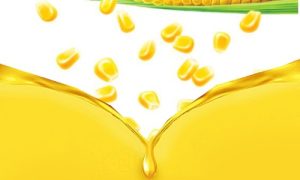Stop producing ethanol from sugarcane juice: Govt to all sugar mills

With sugar production expected to be down in the 2023-24 season, the central government has directed all sugar mills not to use sugarcane juice or syrup for making ethanol this year and has allowed the production of ethanol from B-heavy molasses as it is.
The 2023-24 sugar season started in October, while the ethanol supply year (ESY) started in November.
The direction came as negative news for the sugar companies, with their stocks trading lower on Thursday. Investors felt that ethanol realisations would get impacted as the major feedstock moved to produce more sugar.
In the 2022-23 ESY (December-October), sources said that until a few months ago, of the 4.94 billion litres of ethanol produced in the country, a quarter, estimated to be around 1.26 billion litres, came from sugarcane juice or syrup as feedstock, while 2.33 billion litres (around 47 per cent) came from B-heavy molasses, and the rest, around 1.3 billion litres, came from grain-based sources.
In the 2023-24 ESY, some reports said over 2 million tonnes (mt) of sugar could be ploughed back into the total supplies by this order of the government to stop sugar companies from producing ethanol from cane juice and syrup.
Some industry players said a big reason why the government has not come out with the pricing for the sugarcane-based ethanol this year, even though the season started last month, could be that there is little clarity about the impact on sugar supplies due to the ethanol programme.
But now, with sugarcane crushing entering its third month, the picture on the production front does not look extremely promising. This is why, after stopping imports and expanding the monthly release quota, the government has decided to desist mills from producing ethanol through a process that consumes most actual sugar.
So basically, ethanol is produced from multiple sources in India. It is largely through sugarcane-based molasses and grain-based sources as feedstock. In sugarcane, it is either through sugarcane juice or syrup, or B-heavy molasses and C-heavy molasses.
According to industry players, when ethanol is produced from sugarcane juice or syrup directly, the maximum amount of actual sugar is diverted for making ethanol. This percentage of sugar production diverted is less when ethanol is produced from B-heavy molasses. Then there is ethanol produced from C-heavy molasses where no sugar gets diverted for ethanol. Therefore, when actual sugar production is expected to be just marginally more than the consumption in the 2023-24 season, the government, according to industry players in its judgment, has decided that any further diversion of actual sugar for making ethanol could complicate availability.
“The move will ensure that there is sufficient sugar in the country to meet domestic consumption demand, in light of lesser sugar production in the country. Going forward, it will be important to see how the ethanol blending target is fulfilled in the current season, with ethanol supplied mainly from B-heavy molasses, broken rice, and maize,” said Uppal Shah, co-founder and chief executive officer, AgriMandi.live Research.
India’s sugar production in the first two months of the 2023-24 season has dipped by almost 10.5 per cent to 4.32 mt. In the full season (2023-24), the industry expects net sugar production (after accounting for diversion towards ethanol) to be around 29 mt, while consumption is projected at 28 mt.
The opening stock of sugar for the 2023-24 season is estimated to be around 5.7 mt. In 2022-23, the season’s net sugar production was estimated to be around 33 mt.















